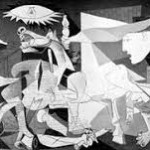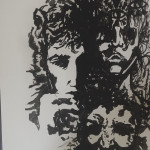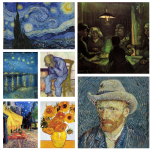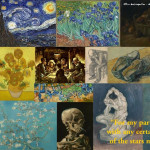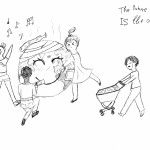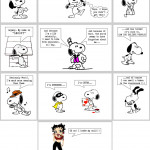By Iro Kanariou
It is not a secret that paintings such as Picasso’s ones are sold for millions to individuals. This actuality in the world of art is dated back at the beginning of time, even at the medieval times. Back then, only by the kings and really rich people could afford paintings . Even today, many galleries and organizations have gained respectful amounts of money by people who just want to make their places look even more outstanding, by adding to their personal spaces famous works of art and spending millions of money at the same time. However, what makes a work of art, such as paintings, worth that much and how well rounded is spending so much money for art?
Why a work of art (such as a sculpture or a painting) can be sold for hundreds of millions of dollars can be explained by a variety of reasons. First of all, these works have usually been made in other centuries, such as in the 18th century . Back to these days technology was not as developed as it is nowadays. Due to this, creating an outstanding piece of art with groundbreaking techniques was not only time consuming and extraordinary, but also really expensive.
Moreover, art, such as Guernica by Picasso, reflects the beliefs, the traditions and the culture that used to exist back on those days. Because of this, it is explained how priceless a piece of art can potentially be, if it is taken into consideration that it is not just a painting or a sculpture for instance, but at the same time, a historical statement.
Lastly, paintings, sculptures, photos and so much more art works, made by famous, gifted and extremely rare artists, such as Vermeer, may worth millions of dollars, just because they were created by timeless artists. Of course, in this day and age, a respectful part of the high society would not hesitate to pay a fortune to buy something that precious and gorgeous; while other people, who are financially insecure, do not hesitate to dream the day they might end up buying their favorite painting.
All these reasons lead a lot of people to buy extremely expensive art works, in order to admire them every day, without taking into consideration the amount of money they have spent, so as to do that.
Summarizing, all these reasons can justify why a piece of art can cost millions of dollars, since it reflects other beliefs, times and may have been made by a famous artist in times when technology was not as advanced as it is today.
However, no matter what, we can all agree that we love a welldrawn painting, a wellshaped sculpture, a wellframed photo and generally, art. Because we can be reflected in it, see every day issues in it or even time travel with it.

